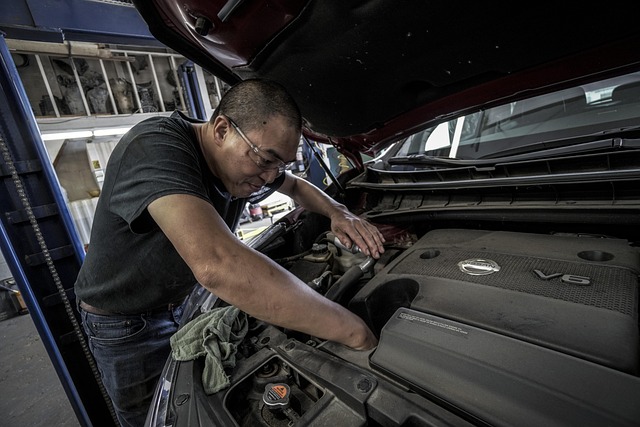Mold in Seguin homes, particularly in damp HVAC systems, poses health risks. Homeowners should differentiate between mold remediation, focusing on safe removal, and inspection, which identifies growth extent and source. Regular inspections are crucial to prevent or mitigate future mold problems, empowering Seguin residents to maintain a healthy living environment through tailored proactive measures.
In Seguin, homeowners often wonder: is a mold inspection or remediation the smarter choice? Understanding the dynamics between mold growth and HVAC systems is key. This article delves into the intricacies of these processes, explaining how HVAC contamination contributes to mold problems in your home. We’ll explore the significance of mold remediation versus routine inspections for effective protection against health risks associated with this silent invader.
- Understanding Mold: Causes and Health Risks for Seguin Homes
- The Role of HVAC Systems in Mold Growth and Contamination
- Comparing Mold Remediation vs. Inspection for Effective Home Protection
Understanding Mold: Causes and Health Risks for Seguin Homes

Mold, a silent invader, can thrive in hidden corners of your Seguin home, particularly within the HVAC system. Understanding its causes and health risks is crucial for Seguin homeowners. Mold grows in damp environments, often obscured by walls, insulation, or behind appliances. It can develop from water leaks, high humidity, or poor ventilation, making it a common issue in older homes or those with inadequate maintenance. The risks associated with mold exposure vary; mild symptoms include sneezing, itching eyes, and skin irritation. However, for individuals with respiratory conditions or weakened immune systems, long-term exposure can lead to more severe health problems.
When faced with suspected mold contamination, Seguin homeowners often wonder about the difference between mold remediation and inspection. Mold inspection involves a thorough examination to identify the extent of mold growth and its source. It helps in determining if professional remediation is necessary. In contrast, mold remediation focuses on removing and restoring contaminated areas, ensuring the environment is safe and free from mold. Knowing when to seek professional help is essential; minor mold issues can be addressed with proper cleaning, but extensive or hidden mold requires specialized knowledge and equipment for effective removal.
The Role of HVAC Systems in Mold Growth and Contamination

HVAC (Heating, Ventilation, and Air Conditioning) systems play a significant role in both maintaining indoor air quality and facilitating mold growth. In Seguin homes, where humidity levels can be elevated, these systems become potential breeding grounds for molds if not properly maintained or monitored. Mold spores, microscopic creatures that can cause health issues for residents, thrive in dark, damp environments—precisely what HVAC ducts and filters can provide. Regular circulation of warm, moist air through these systems increases the risk of mold contamination, especially when there are leaks or inadequate ventilation.
This is where a thorough mold inspection becomes crucial. Unlike mold remediation, which involves actively removing and treating mold growth, an inspection focuses on identifying potential sources and extent of mold presence. For Seguin homeowners, understanding whether their HVAC system is contributing to a mold problem (or at risk) is key in making informed decisions about maintenance or replacement. A professional mold inspector will assess these systems, checking for signs of water intrusion, proper ventilation, and the overall health of the HVAC unit, which are all critical factors in preventing or mitigating mold growth.
Comparing Mold Remediation vs. Inspection for Effective Home Protection

When it comes to protecting your home in Seguin from potential HVAC-related mold contamination, understanding the difference between mold remediation and inspection is key. While both are crucial for maintaining a healthy living environment, they serve distinct purposes. Mold inspection involves a thorough evaluation of your HVAC system, identifying sources of moisture, and assessing areas at risk of mold growth. It’s an essential step in early detection, especially during regular maintenance checks or when dealing with water damage.
On the other hand, mold remediation focuses on the active process of removing and mitigating mold growth once it has occurred. This involves a systematic approach to clean and restore affected areas, ensuring that the root causes of moisture issues are addressed. Comparing these two methods, homeowners in Seguin should consider that while inspection identifies problems, remediation solves them, providing long-term protection for your home’s air quality and structural integrity.
For Seguin homeowners concerned about mold, understanding the dynamics between HVAC systems and mold growth is key. While mold remediation addresses existing issues, a thorough mold inspection serves as a proactive measure, identifying potential sources of contamination. Knowing when to opt for remediation or inspection is essential for effective home protection. By combining these strategies, Seguin residents can ensure their living spaces remain safe, healthy, and free from the risks associated with mold.
